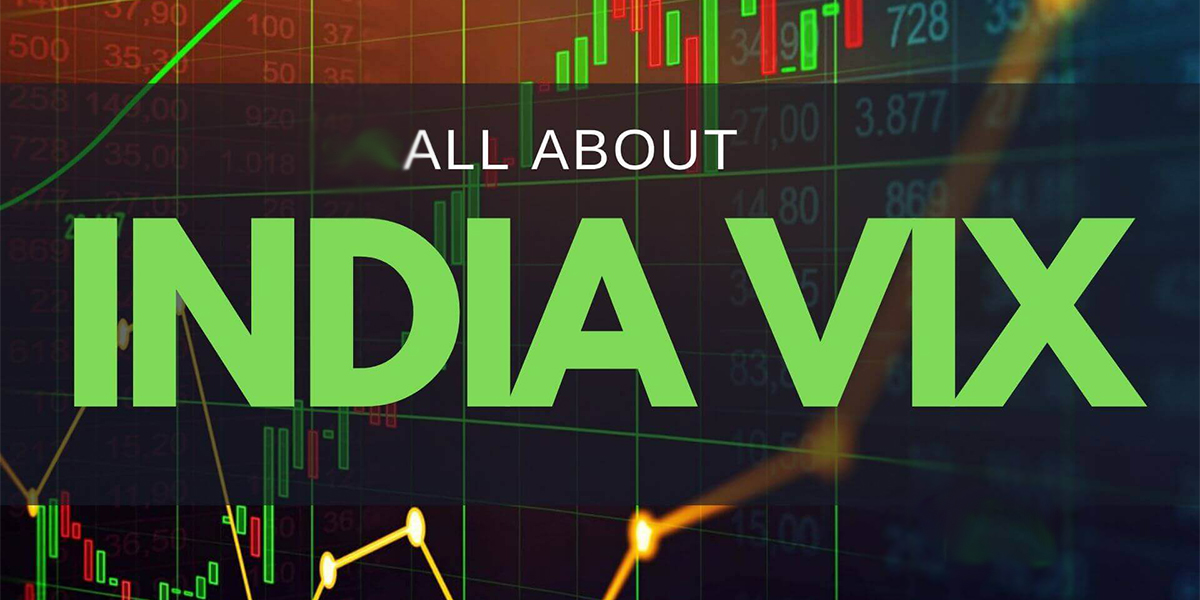India VIX is the index indicating the Indian market’s volatility from an investor’s point of view. Volatility and the value of India VIX move parallelly. A higher value of India VIX indicates higher volatility expectations, i.e. a significant change in Nifty, and a lower value of India VIX indicates lower volatility expectations, i.e. a minimal change in Nifty.
So how do we Interpret India VIX?
India VIX has a strong negative correlation with Nifty. A simple rule & one can say a “Golden Rule” to remember about the relationship between India VIX & Nifty is – “When VIX is high its time to BUY & when VIX is low it’s time to go”. One can also say, that India VIX is an indicator of sentiments. When VIX is high, volatility is extremely high, & quite often one observes prices crashing ferociously. This leads to a fear in the minds of Investors who scramble to exit their positions to prevent themselves from incurring further losses. However, this is exactly the time when prices hit the bottom. On the other hand, if VIX is low, volatility is low. Investors are generally more complacent, as they see the index moving higher & higher every day. This is where greed sets in as one sees prices going up every passing day, and this is also exactly the point where investors get trapped by buying near the tops! As they say, extreme fear marks the bottom & extreme greed marks the top.
An astute investor or trader can use the VIX indicator in exactly the contrarian way & avoid the kind of mistakes a typical investor or trader would make. Now that we know, higher VIX marks the bottom & lower VIX marks the top, the investor or trader needs to get cautious & be on their toes when India VIX is low (as this is where rising markets can turn around & start falling). A trader should also look for any bearish candlestick reversal signals before exiting their positions. Similarly, when India VIX is high, an investor or trader should understand that this is the opportune time to enter the market (as this is where falling price can reverse & go up), & one should also look for bullish candlestick reversal signals before entering these positions.
What is High & What is Low?
Historically, the levels above 35 are considered high for India VIX & levels below 15 are considered low for the same.
Just by taking an example from the charts, you can see that just when the markets made a top of 12,216 in January 2020, India VIX gave an ample warning beforehand as it was trading around 10-12, which is a signal to be cautious of, and take an exit from the market on watching some reversal signals. And just when the markets hit a bottom of 7,511 in March 2020, India VIX was trading around a whopping 86 (which is a level never seen before) – this can be see as a signal to be greedy & enter the markets after watching some reversal candlesticks signals. (Let’s refer to Exhibit 1 to understand this better)
Exhibit 1

India VIX Levels & Nifty Recently
With the same logic, if one looks at the India VIX levels in December 2022, we were trading around 12 to 13 (or simply put, below 15), & around the same time, Nifty was fiddling around its all time high level of 18,800-18,900. (Let’s refer to Exhibit 2 to understand this better).
Exhibit 2

In the month of March 2023, India VIX is at the levels of 14, (much below 15), however, an important point to note is that, we don’t see Nifty overbought or overstretched. In fact, markets have shown a sharp correction from the 18,800 levels to 17,000. Thus, at present, we don’t have a conclusive outcome as far as VIX is concerned.
Thus we always say, & would like to reiterate to our viewers, that India VIX, with all its advantages, needs to be used in confluence with the price charts. As, there are times when India VIX remains in the range for a long time. Thus for optimum results, always combine India VIX with the price action. Ideally, one would like to see overbought markets or negative candlestick signals in conjunction with low VIX & oversold markets, and bullish candlestick signals in conjunction with high VIX.


